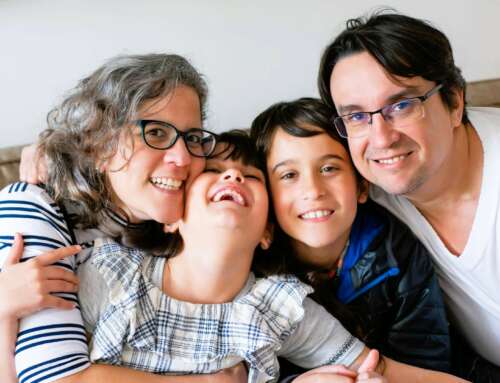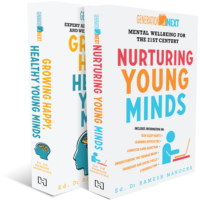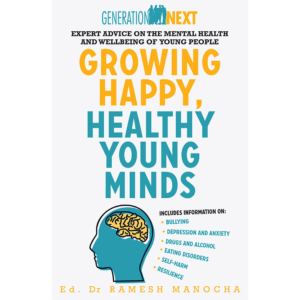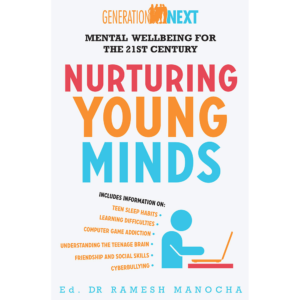Much of the recent literature on adolescent girls focuses on rising levels of anxiety, body image concerns, and social pressures. While these challenges are real and should not be dismissed, an equally important narrative risks being under-acknowledged: teenage girls are idealistic, perceptive, creative, and powerful.
In schools, homes, and communities, they bring emotional insight, social intelligence, and emerging leadership potential that, if harnessed can fuel resilience and high achievement.
Brain Development & Neuroplasticity
While there is always overlap, robust research indicates that young women have:
- Brain volume peaks at an earlier age
- Maturation of brain function at an earlier age (11 years of age on average for girls, compared with 15 years on average for boys)
- Greater levels of white-matter neuroplasticity suggesting a heightened capacity to build structural brain changes in response to learning
- Estrogen that enhances connectivity of the brain as well as plasticity
- Greater and earlier connectivity in the frontal lobes which gives young women greater impulse control and increased capacity for more complex decision-making, that weighs up and evaluates pros and cons of issues
Despite these relative advantages in neuroplasticity and brain development, my own research on learning strengths (www.mylearningstrengths.com) finds that young women are often less able to identify their learning strengths and even when they do so, rate themselves as having lower self-efficacy.
This represents a conundrum: young women learn faster and younger but feel less empowered.
Building confidence
Confidence grows not from praise alone, but from mastery experiences — the repeated act of doing hard things and succeeding. Families and schools that build in opportunities for girls to take on challenges, solve problems collaboratively, and recover from failure, cultivate this deep, earned self-belief. It would be a dreadful mistake to under-estimate the capacity and potential of our young women.
Activities might include:
- Public speaking with preparation and feedback
- Sport, dance, drama and music
- Problem-solving and ethical thinking
- Leading service or creative projects
- Entrepreneurship and STEM challenges
Rather than shielding girls from difficulty, parents and educators should support them through challenge — reinforcing that confidence is not the absence of fear but the presence of courage and preparation.
Bold, broad social networks
The complexity of young women’s social networks requires vigilance about potential rejections. Not only does this risk causing social anxiety, it can also create a conformity to fit in. The desire to please others and be ‘good’ increases acceptability but can also make them vulnerable to exploitation.
We not only want our young women to feel safe, we want them to feel strong as well. We want them to realise they have options, and they have choices and what they choose, matters.
Many of them will eventually be employed in mixed work teams with people they may barely know. For this reason, collaborating with a wide range of students and people of different ages complete projects, sets them up for life.
Finding and building their strengths
Character strengths are helpful, learning strengths are indispensable. Knowing where you are already strong (www.mylearningstrengths.com) and using that knowledge to springboard success, accelerates inventiveness and self efficacy.
Incrementalism
One of the great puzzles at our clinic is the number of young women who are kind and caring to others, but harsh towards themselves.
This seems to arise through a distorted combination of idealism and perfectionism and becomes ‘all or nothing’ thinking. For example, ‘If I am not top of my class, I am no good’. ‘If you are not my best friend, I am not important.’ ‘If my body is not perfect, I can’t go out.’
Kindness to ourselves involves realising that we all ‘works in progress’. We need to plan to incrementally improve ourselves. There is a need to develop nuance rather than having ‘all or nothing’ thinking. We all need a Plan A, B and sometimes a Plan C as well.
For this reason, young women need to set developmental learning goals with clear incremental milestones and receive supportive coaching to exceed those goals.
Being a good friend is about support, not sacrifice. It doesn’t help to feel responsible for your friends’ feelings or taking on their problems. Listening and caring helps other people towards finding their own solutions.
Accelerate neuroplasticity
Young women should not be disadvantaged by waiting for boys to catch on and catch up. Their relative advantages in neuroplasticity should be accelerated.
Neuroplasticity is promoted in settings with high support, engaging challenges, playfulness, fun, physical movement and co-ordination, creative exploration and active problem-solving. The more integrated learning can be, the more successful it is, and the more neuroplasticity will be advanced.
Teenage young women may be yet to develop the ability of transferring knowledge from one setting to another. Activities that require them to gather information from a variety of sources, combine that information in creative ways so that it makes sense, deal with shifting priorities for action as new information is obtained, and then apply their knowledge in diverse settings, accelerates neuroplasticity and learning.
Motivation journeys
Motivation is about finding enduring ways of regulating dopamine. The quick ‘hit’ of victory or being praised elevates dopamine but then rapidly declines. We need to help our young women move from pleasing to achieving.
Meaningful challenges where students reach or exceed targets over time provide one way of increasing motivation. This empowers young women to receive and hear coaching not as criticism but as an opening of possibilities.
Calm empowerment is in the doing
The verbal skills of many young women results in them favouring words over actions. It is easy to under-estimate the physicality of great learning. Young women who are coached towards skill development and gain supportive feedback from a trusted adult, gain confidence.
Physical movement also plays a role in creating social networks and reducing anxiety. The fastest way to calm the mind, is to exert the body. Preceding talking about issues with walking, running or taking on challenges is the most effective way of reducing anxiety.
When we do this with other people we ‘synch and link’ with them. This is a powerful way of broadening the social networks of young women.
After a few years in which female empowerment had some much-needed gains, it feels as if recent years have caused it to stumble. Wage gaps and job security between women and men are still alarmingly disparate.
As career structures alter to meet the needs of a new world, we need to be intentional about recognising the capability of our young women. The world we build tomorrow depends on how well we empower our young women today.
More information
Andrew’s website http://www.mylearningstrengths.com has helped over 40,000 young people in the past year discover their learning strengths.
and www.andrewfuller.com.au
Book for Parents
- Neuroadvantage: The Strengths-Based Approach to Neurodivergence
- Approach to Neurodivergence
- Tricky Behaviours
- The A to Z of Feelings
- Unlocking Your Child’s Genius (Amba Press)
Book for Teachers
- Tricky Conversations
- Guerilla Tactics for Teachers
- Tricky Behaviours
- Tricky Teens
- Unlocking Your Child’s Genius
- Neurodevelopmental Differentiation- Optimising
- Brain Systems to Maximise Learning (Amba Press)







